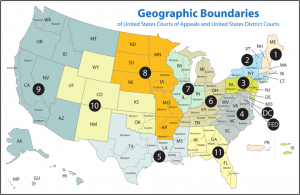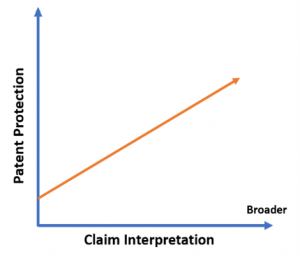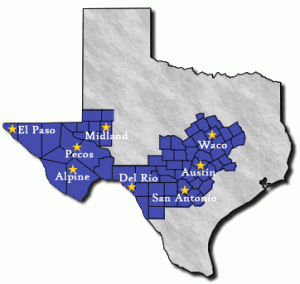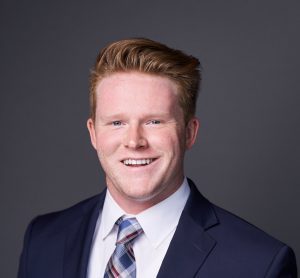As a summer associate working in patent litigation, I kept seeing the same judge’s name in the same district court. At first, I had no idea why this was the case. However, I’ve since learned how important venue is in patent litigation.
Selecting the right venue is crucial in patent litigation cases, because where a case is filed can impact its likelihood of success. So, what exactly is venue? And why is it so important to patent litigation? Allow me explain.
Before I get into venue, I’ll give you a brief recap on why companies or individuals file patent infringement lawsuits. As you might know, a patent gives its owner the right to exclude others from making, using, selling, offering for sale, or importing the claimed invention for a limited period. If someone does any of the previous activities, they have infringed the rights of the patent owner. The patent owner, who is referred to as a patentee, typically asserts their patent rights against another party filing a complaint.
What is Venue?
Now, back to venue. First, it’s important to understand what venue is. Venue is where a plaintiff may file their case. A plaintiff must establish that the court where they are filing a complaint in is “proper.”
Simply put, plaintiffs may not file in any district court that they want. That being said, there may be multiple district courts where a plaintiff can show that venue is “proper.” Once a plaintiff has shown a venue is proper in a particular district, the plaintiff may then file their complaint in any division within that district court.

To elaborate on this a bit, there are 94 federal district courts in the United States, and 55 of those district courts are subdivided into geographic “divisions” used for judge assignments. This essentially creates “mini” district courts within the district – each with their own judges. For example, if a plaintiff wanted their case to be heard in Chicago, they would file their complaint in the Eastern Division of the Northern District of Illinois. As we will see later, the ability to file in any division within the district ends up impacting patent litigation cases.
Although there are general rules for establishing “proper” venue, in patent litigation, a plaintiff has different choices. The patent plaintiff may sue a defendant in either the state where the defendant is incorporated, or in a federal district where the defendant both committed an act of infringement (i.e., making, using, sell, offering for sale, or importing the patented invention) and where the defendant has a “regular and established place of business.” The plaintiff must prove these elements when filing its case.
When there are multiple venues that are “proper,” there are two overarching considerations when choosing venue for patent cases: the Local Patent Rules for a district, and the judges in a district.
What are Local Patent Rules and Why do they Impact Venue in Patent Cases?
Many federal district court has a set of Local Rules that supplement the Federal Rules of Civil Procedure and “fill in the gaps” on things not explicitly mentioned in the FRCP, like pages limits for briefs. In addition to a district’s Local Rules, districts may also have Local Patent Rules that provide further guidance on court procedures for patent cases.
How do local patent rules influence where a plaintiff may file their case? Well, patent cases differ from other cases, because they often require special filings that relate to the technical aspects of the patents and products. Local patent rules may require deadlines very early in the litigation process for submissions of these technical filings. These early deadlines can be for disclosures such as infringement contentions, which identify exactly how an accused product infringes a patent, or quick claim construction timelines, where parties dispute the meanings of terms in the patent. These early timelines require a significant amount of work on the front-end of the case, placing pressure on defendants to settle lower-value cases or else incur significant legal costs.
Some local patent rules may also limit discovery early in the litigation process. This means that less information will be available for the defendant when filing early patent-related documents. Therefore, these local patent rules may facilitate a quicker litigation process. This helps patent owners maximize the protection over their invention during the patent term.
Thus, patent owners filing infringement claims will usually try to file their claims in a venue with local patent rules that have a front-loaded litigation schedule and limited early discovery. This ends up concentrating patent cases in districts that have these expedited local patent rules.
How Do District Court Judges Impact Venue Selection in Patent Cases?
Judges play an important role in patent infringement cases because they make legal determinations and rule on motions that affect the outcome of the case. All trial judges rule on the motions that parties file asking the court to do something. Some common motions include a motion to dismiss the claim(s), or a motion for summary judgment for a ruling on the case before trial. Judges also have the power to stay litigation (i.e., stop the proceeding) for variety of reasons. However, in a patent case, the judge has additional importance. That’s because the Supreme Court in Markman v. Westview Instruments ruled that judges were better suited than juries to determine how patent claims should be interpreted. Let me explain why that’s important.
Patent claims define the scope of the invention, and thus they define what is protected by the patent against infringement. When patent claims are being litigated in court, the parties engage in a process known as claim construction, also called a Markman hearing. There, both sides advocate for a particular interpretation of the words in the patent claims. Typically, a plaintiff-patent owner advocates for a broad interpretation of the claims-at-issue, and the defendant-alleged infringer advocates for a narrow interpretation.

A patent owner wants a broader claim because they want to get the most protection possible for their invention. However, the defendant wants the claim to be as narrow as possible so that their product does not infringe the patent. The judge then determines which claim interpretation is correct. The judge’s ruling in the claim construction hearing has consequences for the potential success of a party’s case. In general, a narrow interpretation makes it less likely for the plaintiff to win, while a broader ruling makes it less likely for the defendant to win.
Notably, a judge ruling on claim construction will likely not have a scientific or technical background. Due to the significance of the judge’s ruling in the claim construction hearing, patentees will typically seek a venue in which judges are highly experienced in patent infringement cases, or where a particular judge has practiced patent law in the past, and thus is familiar with the technical nature of patents.
In addition to the claim construction rulings, judges will also rule on important motions throughout the litigation process, or they will stay litigation proceedings. Some district court judges are less likely to grant motions in favor of the defendant being sued for patent infringement than others. For example, some district court judges disfavor granting a motion for summary judgment in favor of a defendant accused of patent infringement, because they want the jury to decide whether the patent is infringed. Patent owners will want to file their case in a venue where judges do not have a history of granting defendants’ motions, which may result in their case being dismissed, or their patent being invalidated. Additionally, some judges may stay litigation if there is a concurrent inter-partes review (“IPR”) in front of the Patent Trial and Appeal Board (“PTAB”). Patent owners will thus want to file their cases in a venue where judges are less likely to stay litigation for a concurrent IPR proceeding.
If Judges Are So Important, Can Venue Impact the Judge in a Case?
Generally, cases filed in federal court are randomly assigned to a judge. Still, as you can imagine, patent owners want to file their case in a district where the assignment of judges to a case is more predictable. This allows a patent owner to have a better idea of the tendencies and patent experience of the judge before the case even begins.
For example, the Eastern District of Texas is a historically popular district to file patent cases, and judges there are highly experienced in patents. There are several characteristics that make the assignment of cases to judges in this District more predictable. The Eastern District of Texas only has six divisions, and the entire district has only eight judges. Thus, many divisions have only one or two judges. The patent owner therefore has more predictability in knowing which judge will be assigned to their case if they file in a venue like the Texarkana Division in the Eastern District of Texas. That division has only one federal judge.
In a venue like the Central District of California, the cases are assigned randomly to any one of the 28 judges in the district, that are spread across only three divisions. There is no chance for the plaintiff to “judge shop” there like in the Eastern District of Texas. Thus, more patentees file patent infringement suits in the Eastern District of Texas than the Central District of California, because there is an increased predictability in judge assignment.
What Venues Do Patentees Like to File Patent Cases in?
Plaintiff’s filing patent infringement claims flock to three main venues for many of the above reasons: Western District of Texas, District of Delaware, and Eastern District of Texas.
The Western District of Texas illustrates the plaintiff’s interests in choosing a particular venue to file their infringement claims. Since 2018, patent cases filed in the Western District of Texas have increased almost ten times, with the district hearing 22% of all patent cases filed in the United States.

The increase in patent cases filed in the district can be attributed to the 2018 appointment of Judge Alan Albright, who is a former patent litigator. First, the city of Austin is located in the Western District of Texas, thus, plaintiffs are often able to show that venue is “proper” in this district. Judge Albright is the only judge assigned to the Waco Division in the Western District of Texas, making it certain that plaintiffs filing in the Waco Division will be heard by Judge Albright. Since his appointment, Judge Albright has implemented new local patent rules to streamline patent litigation, requiring early disclosures and limiting discovery before the claim construction hearing. He typically sets a fast schedule for a case, which leads to quicker trials and incentivizes settlements. Judge Albright typically does not grant motions to transfer cases out of the Western District of Texas. Therefore, a plaintiff’s case is also likely to stay in front of Judge Albright. Judge Albright does not typically stay litigation for concurrent IPR proceedings in the PTAB, and he has never granted an invalidity motion. Thus, plaintiff patent owners have an interest in litigating their patent infringement claims in front of Judge Albright.
Patent Litigators Should Know the Reasons Why a Case is Filed in a Particular Venue
As a patent litigator, most of your cases will occur in very few districts for the aforementioned reasons. When you’re representing a patentee as an attorney, it is imperative to know which venues you should be filing your client’s claims in to maximize their chance of winning their case. Likewise, if you are representing a defendant against infringement claims, it is important to know why a patentee has filed in a particular venue, and how to use those reasons to your favor. Becoming familiar with the past rulings of judges will also help in formulating your litigation strategy as you move along in the case.

Jack Hynes
Associate Blogger
Loyola University Chicago School of Law, J.D. 2023
